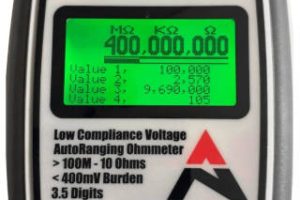In a rose-tinted world, distributors would generously dual-stock everything during the changeover and create a separate set of order numbers for every newly compliant part to match the wants of customers to the offerings of suppliers.
Back in the real world, few distributors have the necessary space to dual-stock or the spare cash to pay for a doubling of inventory, particularly if it will be followed two years later by a return to previous levels once lead (Pb), mercury and the other banned substances have left the system.
What is actually going to happen is: the biggest part makers and the biggest customers will set the agenda and everyone else will make the best of it. Equipment makers will accept some compliant parts carrying old part numbers. Part makers will change part numbers they wanted to keep the same, and distributors will dual-stock some items.
One process that can stop the inevitable muddle becoming a disaster is planning; and the thing that makes planning possible is information.
For the majority of equipment manufacturers, the most crucial information will be how to order the compliant versions of a given part from their distributor – and this information is going to have to be available through the websites of distributors.
As many part makers have yet to decide what they are doing with their RoHS-compliant parts, it is unfair to expect distributors to have part-by-part lists of compliant part ordering information today, but every distributor should at least have a plan for handling the move to compliant parts, and should be sharing some of that information on the web.
And while many are already stocking RoHS-compliant parts, not all distributors offer compliance Infomation in an easily-accessible form. On the other hand, some distributors have put up mini-encyclopaedias.
Farnell InOne is one of the firms making the effort. It has a RoHS-compliance click on its home page which takes you through to backgrounders on the RoHS and WEEE (waste) directives, as well as information on Pb itself. These articles are the strength of the site as Farnell has written most of them itself, so you get an industry perspective. In addition, the home page has a link to sign-up for e-mailed RoHS and WEEE updates, and a handful of semiconductor and soldering companies talk about change-over strategies.
Silica has a ‘green component’ click on its home page which takes you though to a site which, while it lacks background and analysis, makes up with a list of suppliers including hyperlinks to the ‘green’ or ‘lead-free’ websites of 19 semiconductor makers.
Abacus Group has a RoHS and WEEE link on its home page. Taking a slightly different tack to Farnell, Abacus’ background information section makes less use of in-house analysis and instead links to the sites of various official and consulting sites.
There are also a good number of manufacturers links, and among the semiconductor firms are a bunch of passive component makers. Of these, ‘AMP (Tyco)’ takes you to the actual European Directives. You can download these and have hours of fun trying to untangle exactly what Eurocrat Commissioners and lobbyists made of the European Parliament’s straightforward request to make consumer goods less dangerous.
Those looking for a brief clear introduction to compliance would do well to read marketing manager Douglas Gilmour’s letter to the industry on Flint Group’s website under the title ‘lead-free risk-free?’ in its news section.
Dionics has started a separate website for Pb-free information which majors on legislation and has a particularly fine, if slow, interactive ‘timeline of activity’ available from the home page. There is also a concise links page to government sites and industry bodies. The FAQ section is well worth a look for its industry-centric interpretations of parts of the various directives.
While there are other ways to get RoHS and WEEE directive information, the Web is almost certainly the most convenient.
The majority of distributors sites are thin on suitable information, but others supply all the legislative and background information you are ever likely to need.
Unfortunately, all distributor sites EW could find stop short of offering part-number-level ordering information for every RoHS-compliant parts equipment manufacturers will need for the changeover.
 Electronics Weekly Electronics Design & Components Tech News
Electronics Weekly Electronics Design & Components Tech News



